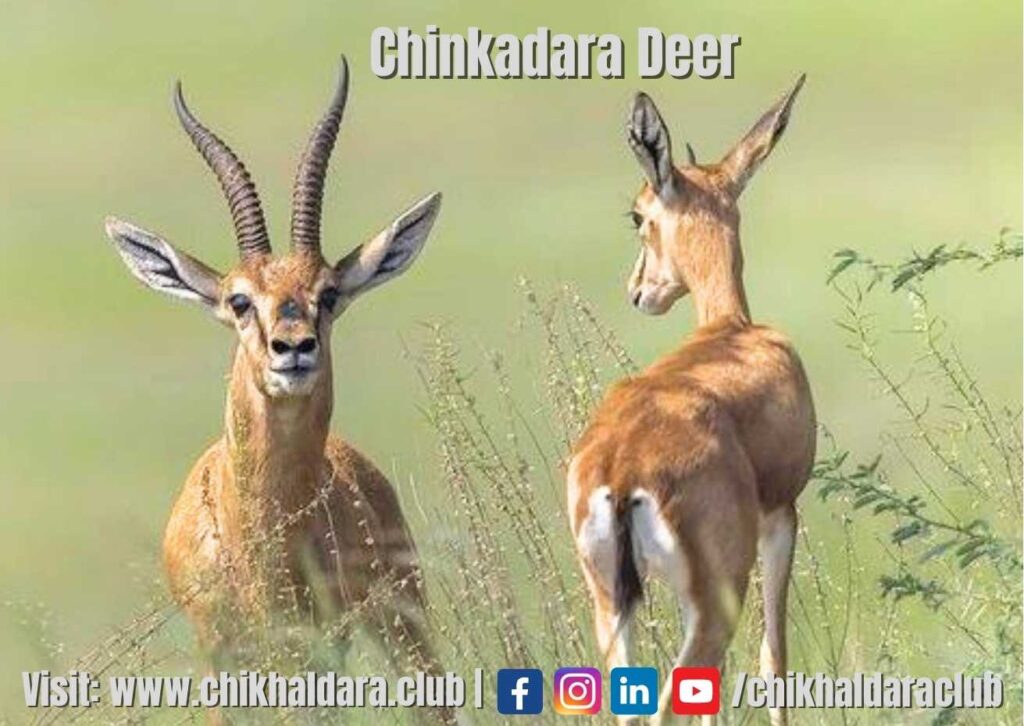Table of Contents
Chinkara, also known as the Indian Gazelle, is a graceful antelope species found in India, Pakistan, and Iran. It is one of the smallest species of antelopes and is known for its elegant appearance and agility. In this article, we will explore the habitat, physical characteristics, behavior, and conservation status of the Chinkara.
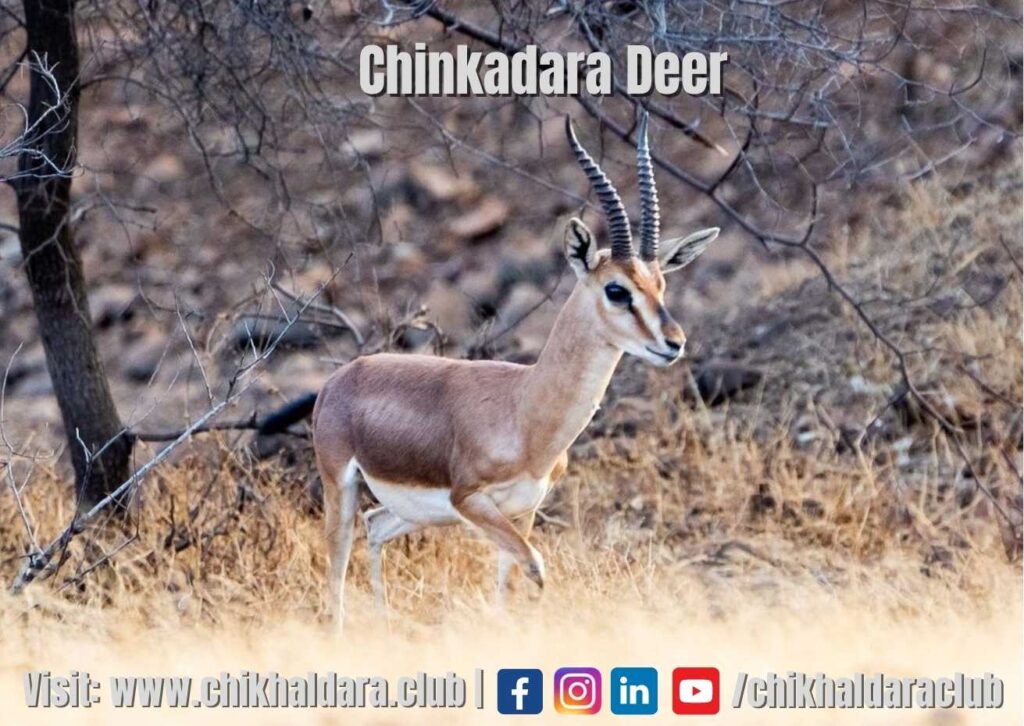
Chinkara Habitat
The Chinkara is found in the arid and semi-arid regions of India, Pakistan, and Iran. In India, it is found in the states of Rajasthan, Maharashtra,Gujarat, Haryana, Punjab, and Madhya Pradesh. The Chinkara prefers open grasslands, deserts, and scrublands, where it can find suitable vegetation to feed on.
Physical Characteristics
The Chinkara is a small antelope, with a height of about 65-70 cm (25-27 inches) at the shoulder and a weight of 20-25 kg (44-55 pounds). It has a sandy to light brown coat that blends well with its arid habitat. The coat is short and smooth, with a white underbelly and a white stripe on the throat. The Chinkara also has large, dark eyes that provide excellent vision for detecting predators.
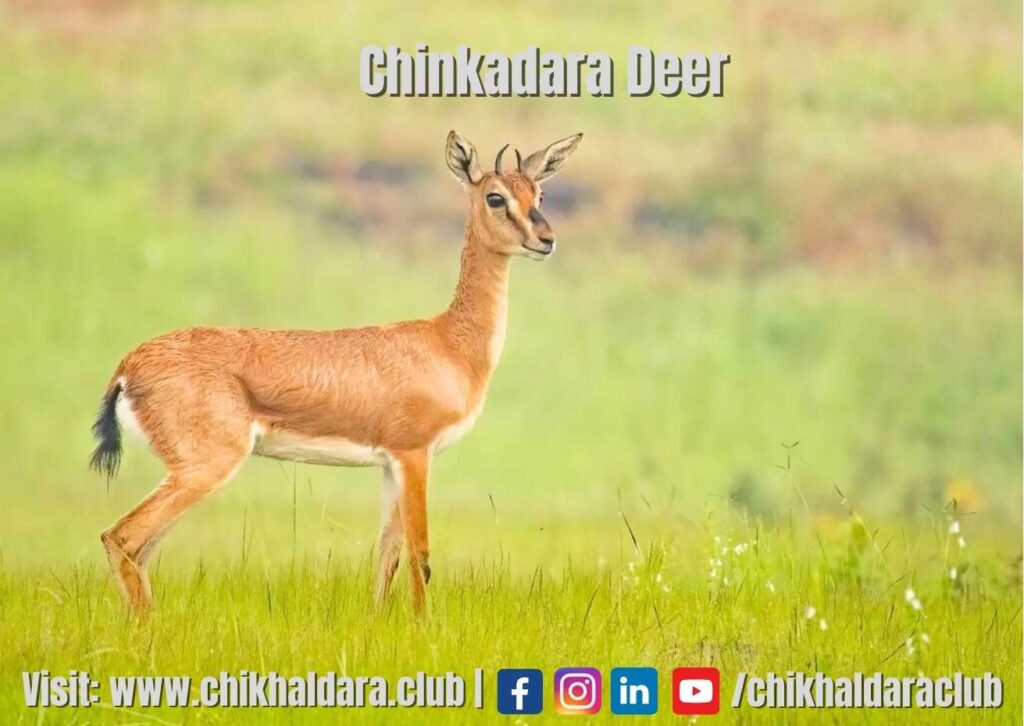
Behavior
The Chinkara is primarily a herbivorous animal, feeding on grasses, leaves, and shrubs. It is a diurnal animal, meaning that it is active during the day, and spends most of its time grazing. The Chinkara is a solitary animal, with individuals only coming together during the mating season. During the breeding season, males engage in territorial displays and fights to establish dominance and attract females.
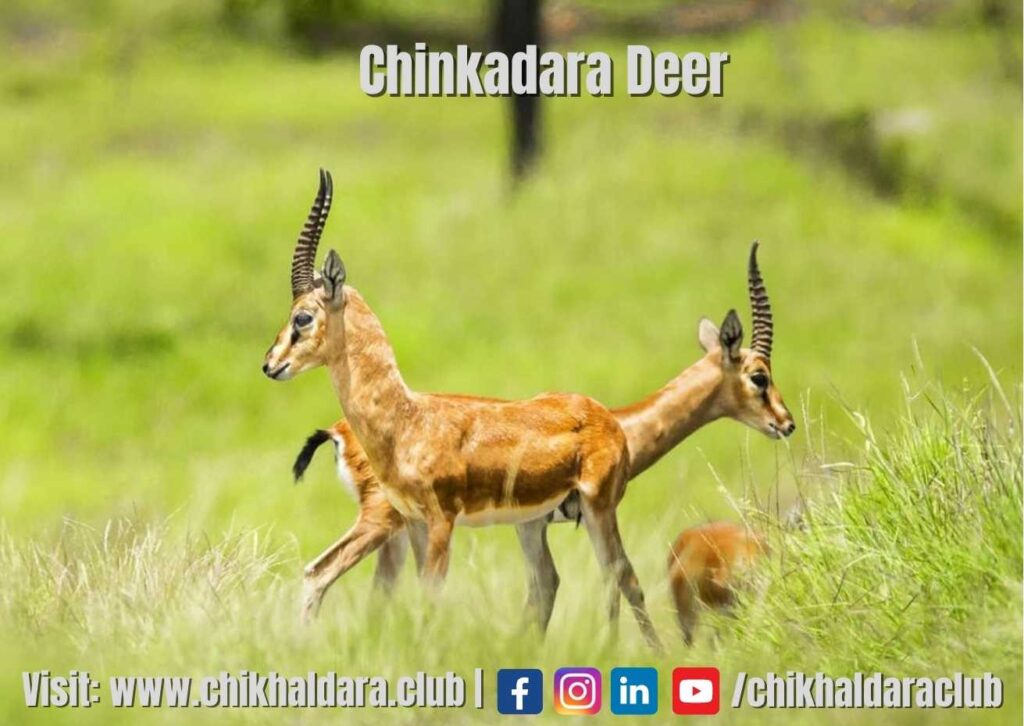
What does Chinkara eat ?
Chinkara is primarily a herbivorous animal and feeds on various plant materials such as grasses, leaves, and shrubs. In their natural habitat, Chinkaras are found in arid and semi-arid regions, where vegetation is sparse and water is limited. Therefore, they are adapted to consume a variety of desert plants, including leaves, flowers, and fruits, as well as thorny bushes and grasses. They can survive for long periods without water and can extract moisture from the vegetation they consume. The Chinkara’s diet varies depending on the season and the availability of food in their habitat. During the dry season, when food is scarce, they can survive on the minimal vegetation and water available in their surroundings.
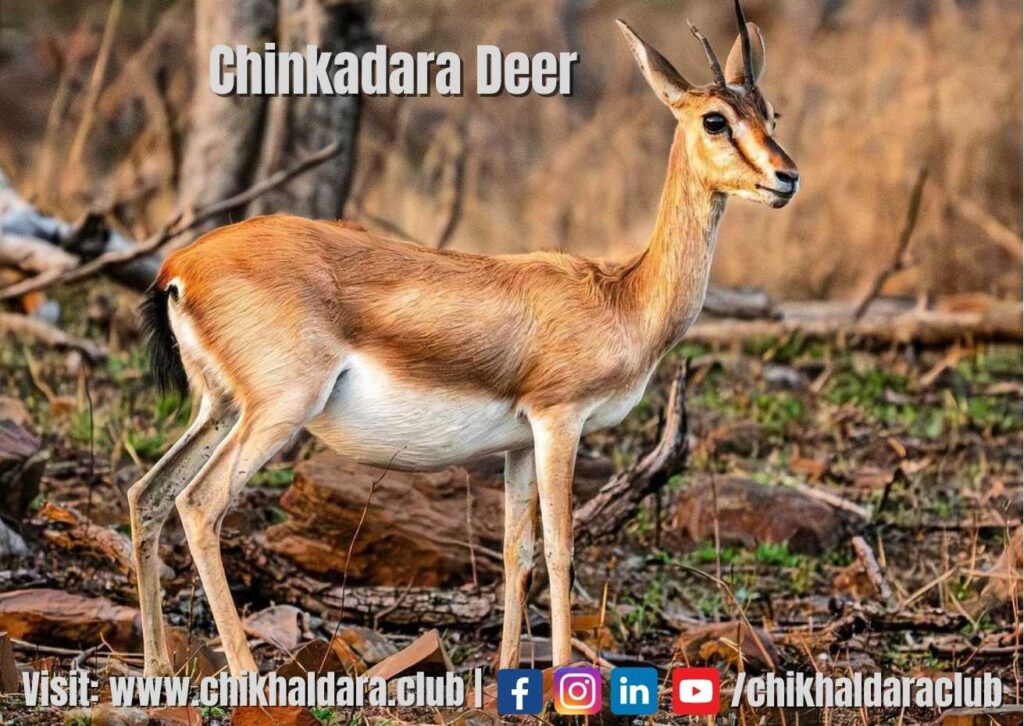
Conservation Status
The Chinkara is classified as a near-threatened species by the International Union for Conservation of Nature (IUCN). The main threats to the Chinkara are habitat loss, hunting, and poaching for its meat and skin. The Chinkara is protected under the Wildlife Protection Act of India, and hunting or poaching is a punishable offense. Conservation efforts are being made to protect the Chinkara and its habitat, including the establishment of wildlife reserves and awareness campaigns to discourage hunting and poaching.
How can i see chinkara deer in India ?
Chinkara, also known as Indian Gazelle, can be seen in various wildlife sanctuaries and national parks in India, including Melghat Tiger Reserve in Maharashtra. This parks and sanctuaries offer safari tours and guided walks where visitors can see chinkara in their natural habitat. However, sighting chinkara in the wild is not guaranteed as they are shy and elusive animals. It is recommended to visit these parks during the early morning or late afternoon hours when chinkara are most active.
You need to book jungle safari and try to find the chinkara during jungle safari.
The best time to see Chinkara, also known as Indian Gazelle, is during the winter months from October to March. During this time, the weather is pleasant, and the vegetation is sparse, making it easier to spot the deer. The early morning and late afternoon hours are the best time to see Chinkara as they are most active during these times. It is important to note that Chinkara are shy and elusive animals, so sighting them is not guaranteed.
Find More about;
Melghat Tiger Safari
Chikhaldara Jungle Safari
Semdoh Jungle Safari
Summary
The Chinkara is a beautiful and graceful antelope species that is an important part of the arid and semi-arid ecosystems of India, Pakistan, and Iran. Its conservation status is near-threatened, and efforts are being made to protect this species from habitat loss and poaching. Visitors to India can see the Chinkara in wildlife reserves such as the Melghat Tiger Reserve in Maharashtra, where the Chinkara is one of the main attractions. It is important to remember that these are wild animals, and visitors must follow the rules and guidelines of the Melghat Tiger Reserve to ensure the safety of the Chinkara and themselves.

frequently Asked Questions | FAQs
Where is chinkara found in India?
Chinkara, also known as Indian Gazelle, is found in various states of India, including Rajasthan, Maharashtra, Gujarat, Haryana, Punjab, and Madhya Pradesh. It prefers arid and semi-arid regions with open grasslands, deserts, and scrublands.
How do chinkara survive in desert?
Chinkara, also known as Indian Gazelle, are adapted to survive in desert environments. They have several physiological and behavioral adaptations that allow them to thrive in arid regions with minimal water and vegetation. They can survive for long periods without water and can extract moisture from the vegetation they consume. They are also adapted to eat thorny bushes and grasses, which are available in their natural habitat. Chinkara are also capable of reducing water loss through urination, sweating, and respiration. They are also known to be active during the early morning and late afternoon hours when temperatures are cooler, which helps them avoid heat stress.
Where is chinkara found?
Chinkara, also known as Indian Gazelle, is found in various states of India, including Rajasthan, Maharshtra, Gujarat, Haryana, Punjab, and Madhya Pradesh. It prefers arid and semi-arid regions with open grasslands, deserts, and scrublands.
Is chinkara extinct?
No, chinkara, also known as Indian Gazelle, is not extinct. However, it is classified as a near-threatened species by the International Union for Conservation of Nature (IUCN) due to habitat loss, hunting, and fragmentation of their population. Conservation efforts are being undertaken to protect and conserve this species.


